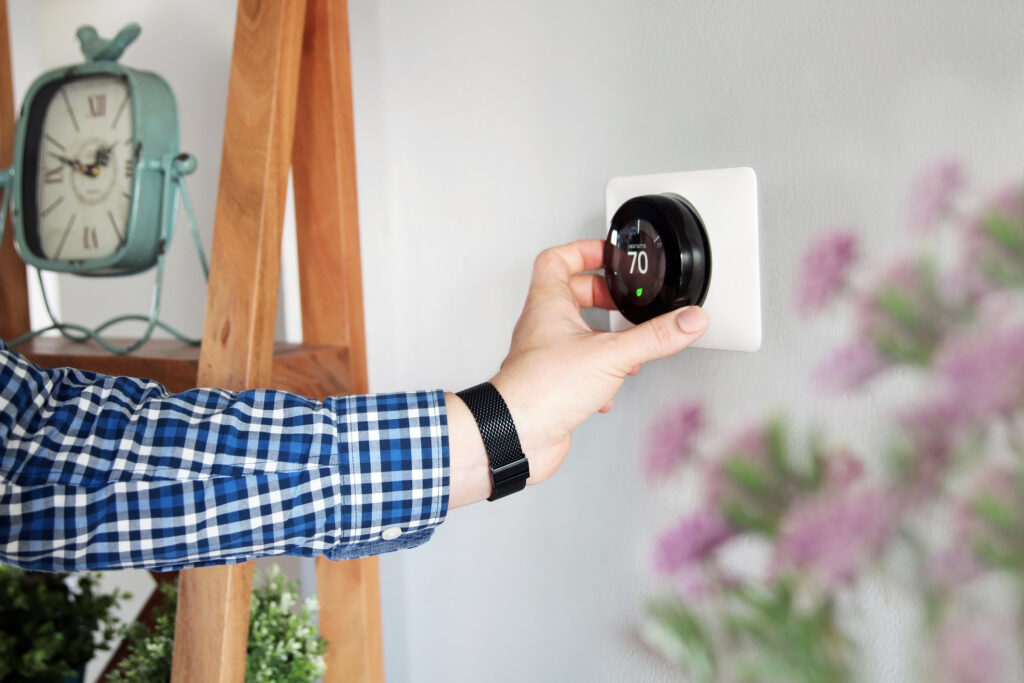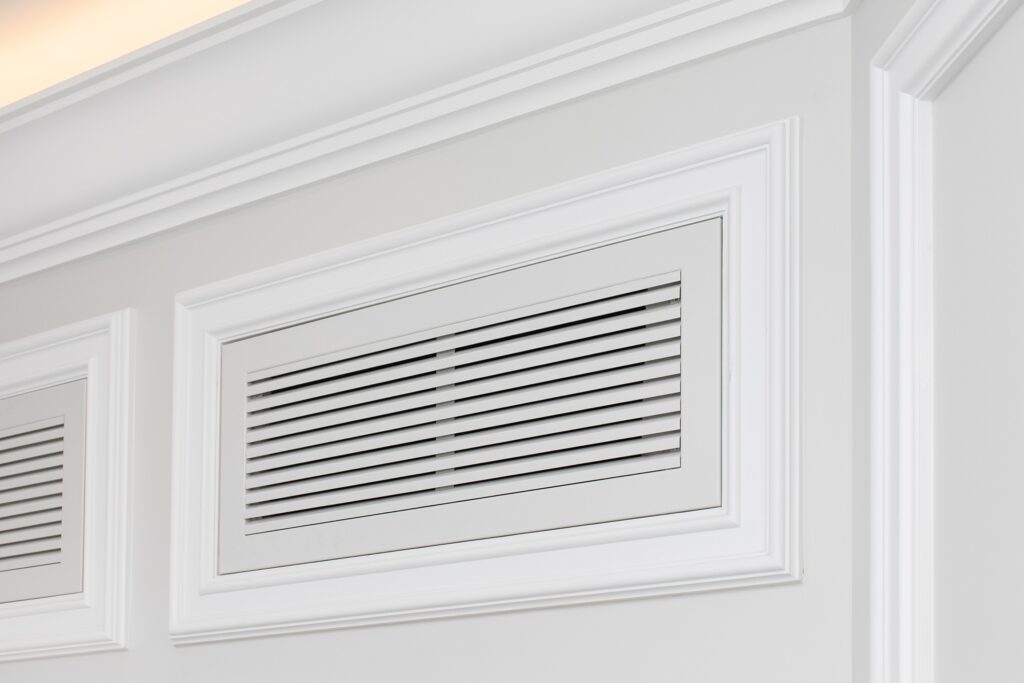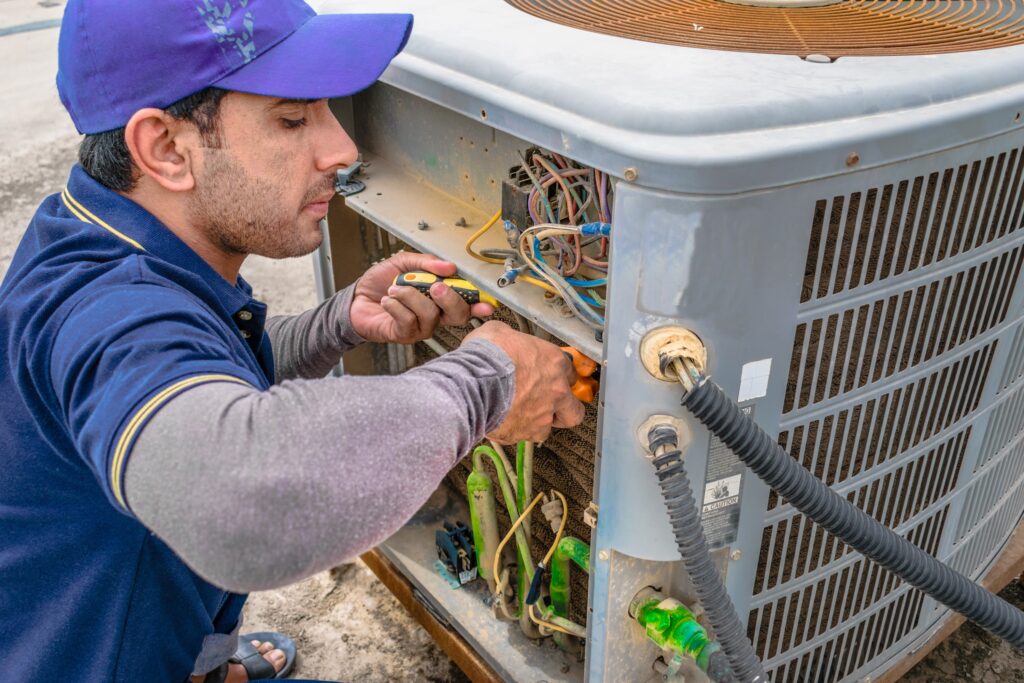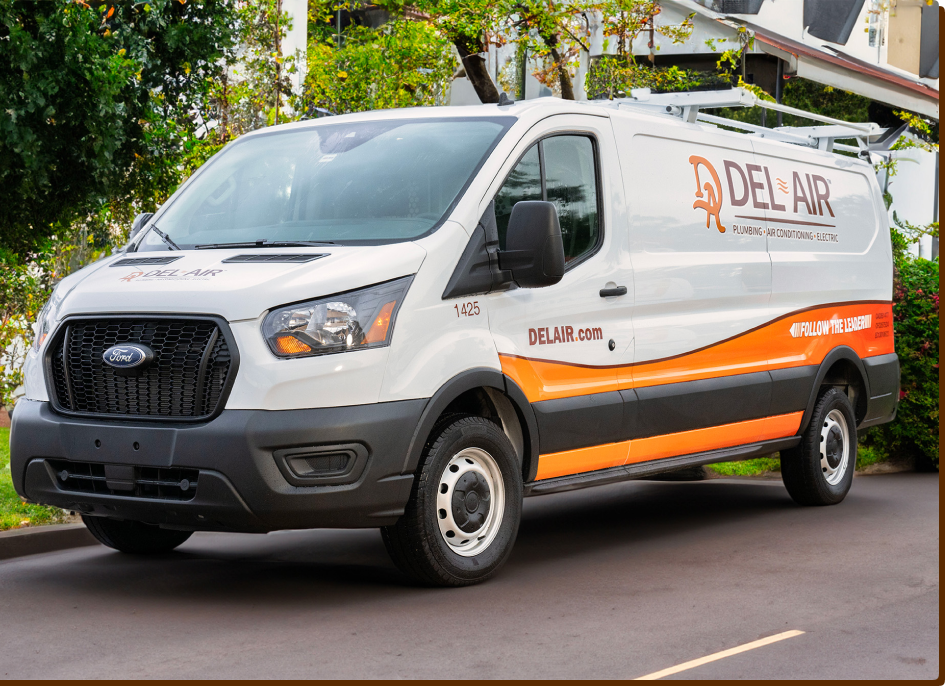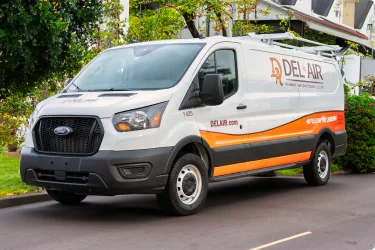An air conditioning system is one of the most vital investments that you can make in terms of comfort for everyone in your household. When temperatures soar past the 80° F mark, it’s virtually impossible to make it through the day — let alone be productive — without the coolness A/C provides. An air conditioner is also among the costliest of household necessities in which you can invest, which makes it crucial to know your options as far as value and performance when it comes to the various types of A/C systems on the market.
For those with little experience buying air conditioning, the thought of an air conditioner typically conjures the image of single–room units, the kind that are placed inside of windows. While such units are adequate for studio apartments, the majority of homes these days are turning to central air systems that provide A/C cooling throughout every room in the house.
Still, choosing a home air conditioner can be a confusing process for many first–time buyers, as well as homeowners looking to upgrade systems that were pre–installed at the time of move–in. We’ll address questions about A/C types, features, services, and more in the following air conditioner buying guide.
The Different Types of Central Air Systems
As summers get progressively hotter with each passing year, more people than ever rely on air conditioning to stay cool during months when temperatures peak. Today, A/C units are present in roughly 75 percent of homes in the U.S., where at least 90 percent of homes built in recent years have built–in central air systems. Central air conditioning is one of the most energy efficient methods for staying cool during the hottest months of the year. The benefits to this are twofold:
- Central air conditioning helps to reduce the emissions that have led to climate change
- It also helps homeowners save money while staying comfortable between spring break and the final weekend of summer
In the Sunbelt part of the U.S., where A/C systems are utilized daily for nearly half the months of a given year, homeowners generally use central air systems for needed coolness. In areas with more regular heating and cooling cycles, homes are usually equipped with A/C units of the heat–pump variety. As a dual–purpose system, heat pumps transfer indoor heat outside during the summer months and do the reverse when the weather is cold.
The majority of homes with central air conditioning have what is known as a split system, which consists of an outdoor condenser and an indoor fan-and-coil setup. The two components are connected by pipes that transfer refrigerant, which provides the cooling effect that is then distributed to desired areas around the house through the blowers. The layout of a central air system generally works as follows:
- The condenser, located outdoors.
- The air handler, usually placed in basements.
- The ductwork, generally routed throughout the wall cavities and utility spaces of a house.
- In houses that are ill–equipped for the ductwork required of central air systems, the split–ductless model is a viable alternative.
Key Things to Consider When Selecting an Air Conditioner
Size
In the parlance of air conditioning, size is the word used to describe the cooling capacity of a given unit. As such, the size of an A/C unit is not determined by its width or height, but by the amount of cooling it’s able to deliver per second. The measurements of size are indicated either by tons or BTU/h, which stands for British thermal units per hour. If an air conditioner offers one ton of cooling, that would be the equivalent of 12,000 BTU/h.
Efficiency
The amount of cooling that gets produced per electrical watt is referred to as efficiency. Rating-wise, efficiency is indicated by SEER, which is short for Seasonal Energy Efficiency Rating. Currently, a SEER rating of 13 is the minimum required for split-system A/C units. Ideally, you should choose a system with the highest SEER rating available, because efficiency translates to savings on energy.
For every three points, SEER efficiency increases by 30 percent. For maximum efficiency, a SEER rating of at least 15 is most desirable. On conditioners made before 2006, however, the SEER rating might be no higher than 6. The following features are generally needed in order for an air conditioner to have a high SEER rating:
- Big coils, which allow heat to transfer more efficiently.
- A thermal expansion valve and a temperature rating of 11.6 or higher. This allows for utmost efficiency during peak times of outdoor temperature.
- A blower with adjustable speed, which allows you to vary the usage level according to changes in temperature and save on energy in the process.
- An option to switch to fan-only mode. This allows you to turn off the A/C function and save energy but keep the air flowing via fan blades, which are good for overnight circulation during warmer months.
- A delay function for the fan, which will leave the system in fan-only mode long enough to circulate lingering coolness once the compressor itself has been shut off. It’s a convenient late-night option that saves even more energy.
- A filter light, which will start flashing when it’s time for a cleaning, a useful tool for keeping you alerted of the proper intervals for maintenance.
A/C systems with ultra–high efficiency are most necessary in super hot states like Florida, where the cooling power of an air conditioner is a daily and often nightly necessity throughout most of the year. In regions with somewhat more normal cooling needs, high-efficiency systems are an environmentally friendly option, but not always practical cost-wise for people on fixed incomes. Nonetheless, the energy savings that come with high efficiency can make back the difference of a costlier, high-SEER-graded system over time.
Load
In order to have a new A/C system installed in your home, the cooling needs of your house — aka “the load” — need to be assessed in advance. The load is not just determined by the overall size and square footage of your house. The following specifications must also be considered:
-
- The layout, height and number of floors
- The position and quality of windows
- The thickness and quality of walls
- The sizes of individual rooms
The position of your house in relation to the sun and the general climate of your area are also determining factors. Loads calculations are usually performed by either the contractor or the utility company that handles the installation.
Thanks to computer technology, which makes it easier to take various load factors into consideration simultaneously, load calculations are made with far greater accuracy than ever before. In the past, the process of load evaluation relied on estimates, which would often result in systems being installed that were either too big or too small for a given house.
When an A/C system is ill–sized for a house, the conditioner inevitably ends up being powered on and off too often, which decreases the lifespan of system components and leads to increased energy consumption and higher electrical bills.
During the cooling process, an air conditioner is supposed to do two things at once: cool the air and suck out the moisture. Without the second step, the cooled air will still feel muggy, and the comfort of household members will be compromised. To compensate, people often adjust the thermostat, but all this really does is crank up energy costs. The problem in these cases is generally down to oversized A/C systems, which fail to adequately remove moisture. As moisture lingers, it can hamper system components and lead to the development of mold.
In houses where the A/C system is sized appropriately, the conditioner runs at a rate sufficient for wiping moisture from the air. This makes it possible to feel the comfort of cooled air without mugginess and do so without adjusting the thermostat.
Thermostat
If the system is equipped to allow for personal adjustment of the thermostat settings, you could possibly trim 20 percent off your monthly cooling costs. If used in tandem with a ceiling fan on 100+ °F days, the coolness in your rooms could be enhanced even further.
A/C Refrigerant: From R-22 to R-410A
The refrigerant used in older air conditioners is bad for the environment and is therefore being phased out globally in newer models. In older systems, the problem is caused by leaks in the components, which allow refrigerant gasses to slip out and attack the ozone. Therefore, it’s important to buy an A/C system consisting of recently made parts so as not to contribute to the problem.
The most recent changes in manufacturing laws regarding A/C refrigerant were enacted by the Clean Air Act of 2010, which began the decade-long global phase out of Freon, or R–22, in all air systems manufactured and imported into the U.S.
Made of hydrochlorofluorocarbons, Freon was initially thought to be an eco–friendly refrigerant. Freon came into use during the late 1990s as a replacement for chlorofluorocarbons (CFCs), which in turn were phased out during the late 1980s and early ’90s after it was found CFCs contribute to ozone depletion.
While not nearly as bad for the environment, Freon still has ill effects as a greenhouse gas. By 2015, the manufacturing of Freon was down quite a bit. Consequently, the price on R–22 has risen sharply, which renders older systems that use the refrigerant more costly to operate. If your system uses Freon but needs to be recharged due to a leak, your first priority should be to get the leak fixed as soon as possible. Due to the soaring cost of the gas, a Freon recharge could run into the three figures.
Though it has largely been phased out, R-22 will continue to be produced — albeit at higher costs — for pre–existing equipment that runs on the gas. Today, however, manufacturers are turning to newer refrigerants that really are more friendly to the ozone, the most popular of which is R-410A. Consisting of hydrofluorocarbons, R-410A is available under several brand names, such as Forane® and Puron®. Despite this, the process that goes into making R-410A does have its ecological ill effects, even if it doesn’t contribute to ozone depletion. In Europe, another alternative refrigerant, R-407C, has also gained favor among manufacturers of residential A/C systems.
Warranties on Central A/C Systems
One of the telltale indicators of an A/C system’s longevity is the length of warranty the brand in question is willing to offer its customers. Therefore, it’s wise to read the fine print of a warranty and be aware of the terms and limits before you settle on a purchase. Warranties on A/C systems differ between various brands. Some brands offer coverage on an entire system while others offer select coverage on specific parts. Examples of different coverage policies include the following:
-
-
- Carrier offers a one-year labor and service warranty, as well as an extended plan that covers parts and labor on all refrigeration pieces — such as the compressor, evaporator and tubing — for four additional years.
- Goodman offers a 10-year Parts Limited Warranty coverage on all functional parts and a Lifetime Compressor Limited Warranty on the compressor in air conditioning products.
- Amana offers unlimited coverage on compressors used in high-efficiency systems for as long as you occupy the same house in which you have the system installed.
- Trane offers a Registered Limited Warranty for air conditioners and related parts that are registered within 60 days of purchase. Customers that don’t meet the deadline are covered instead by Trane’s Base Limited Warranty.
- Lennox offers an Extended Limited Warranty Plan that extends the company’s Basic Limited Warranty program by 5 to 10 years on select products like Elite® and Merit® Series air conditioners.
-
Basically, the warranty of a given brand should be read point-by-point for a full understanding of what is covered. As a general rule, warranties are voided if a system is serviced by unauthorized personnel. Furthermore, warranties won’t cover parts and labor for damage resulting from owner negligence.
Upgrading vs. Replacing an A/C System With a New One
If your house has changed since the central air system was first installed, you might have different cooling needs. For instance, you might need less cool air than you did before if you’ve recently replaced your windows or insulation, because those features will strengthen the barriers between your indoor spaces and the temperatures outside. Then again, you might have an increased need for cool air if you’ve grown your house with the addition of new rooms or the expansion of preexisting ones.
In order to determine whether your cooling needs are different than before, have a load calculation performed by a contractor. Ask them if you’ll need new ducts or whether the ones you have should be insulated, sealed or possibly resized. For maximum efficiency and reliability, the evaporator coil and compressor should come from the same manufacturer. Newer systems offer nearly twice as much efficiency as their counterparts from the early ‘90s, but the overall price can depend on the size, configuration and ductwork requirements for your home.
For system upgrades in existing homes, inspections should be made of the ducts that carry cooled air across the house. If a duct has a leak, it can hinder the system’s ability to adequately deliver air, and this can raise usage costs by as much as 50 percent over what they’d be under ordinary circumstances.
Regardless of whether you upgrade an old system, replace it with a new one, or are looking to buy an A/C unit for the first time, it’s crucial to have a contractor you can trust. Therefore, a contractor must be bonded so you as a consumer will be protected in case anything goes awry during any stage of the process.
A/C Upkeep and Maintenance
In order to ensure long lasting, defect–free performance from your A/C system, it’s crucial to keep the areas clean around each of the indoor and outdoor components:
Don’t allow bushes or shrubs to grow within two feet of the outdoor condenser.
Put potted plants at a safe distance.
Keep the condenser coils clean and free of dust.
Inspect the drain pipe for obstructions on a semi–regular basis.
To prevent air from escaping through the ducts, have them sealed and insulated.
Each year, schedule to have a licensed A/C technician replace the filters and clean the coils, drainage, and blowers in your system. Also have them inspect the system for leaks, defects and possible problems with the refrigerant.
Del-Air: The Best Source for Central Air Conditioning Systems
The technology behind air conditioning has grown by leaps and bounds in recent years. In part, those changes have been spurred by competing brands on the A/C market, which constantly seek to outdo one another with advanced features and promises.
Consequently, figuring out how to choose an air conditioner unit can be difficult and time-consuming process, regardless of whether you’ve done so in the past. For those reasons and many others, it’s important to know local dealers you can trust when making decisions between one brand and another.
In choosing an air conditioner in Florida, homeowners rely on Del–Air for advice, products, and service on all things related to A/C systems. As the Sunshine State’s leading dealer of top A/C brands such as Carrier, Trane and Lennox, we make choosing a home air conditioner into a rewarding process for residents.
For more than three decades, we’ve sat down with customers with homes large and small to design perfectly sized A/C systems. At Del–Air, we’re committed to offering unbeatable prices on guaranteed air conditioners that provide maximum coolness and efficiency.
Stay Cool in Florida With a New A/C Unit
It’s no secret Florida is one of the hottest states in the country, and people here must have air conditioning for at least half the days out of every year. However, unless you have an up-to-date A/C system, staying comfortable could be mighty costly over the course of a year. In homes throughout the Sunbelt, heating and cooling bills pass the four-figure mark on an annual basis. For a lot of these people, money is being drained due to:
-
-
- Leaky ducts
- Mismatched components
- Ill–sized systems
- Aging units
-
Things don’t have to be this way. If the conditioner in your central air system is at least a dozen years old, replace it with one of the Energy Star-certified models carried by Del-Air, and your cooling bills could be cut in half. At Del–Air, we offer unbeatable warranties and affordable service, maintenance, and installation from our expert HVAC technicians. We offer monthly payment plans and financing for as low as $79.95 on approved credit. Furthermore, on new-unit purchases, you could qualify for tax credits as well as rebates from the manufacturer.
Choosing the right air conditioner is easier than ever when you come to Del-Air for advice, A/C systems and installation services in Central Florida. To learn more about our air conditioning services — including tune-ups, repairs, installations and emergency help — or to schedule an appointment with one of our experts, contact us today. Summers are much too hot and long to be living without quality air conditioning in your home.


